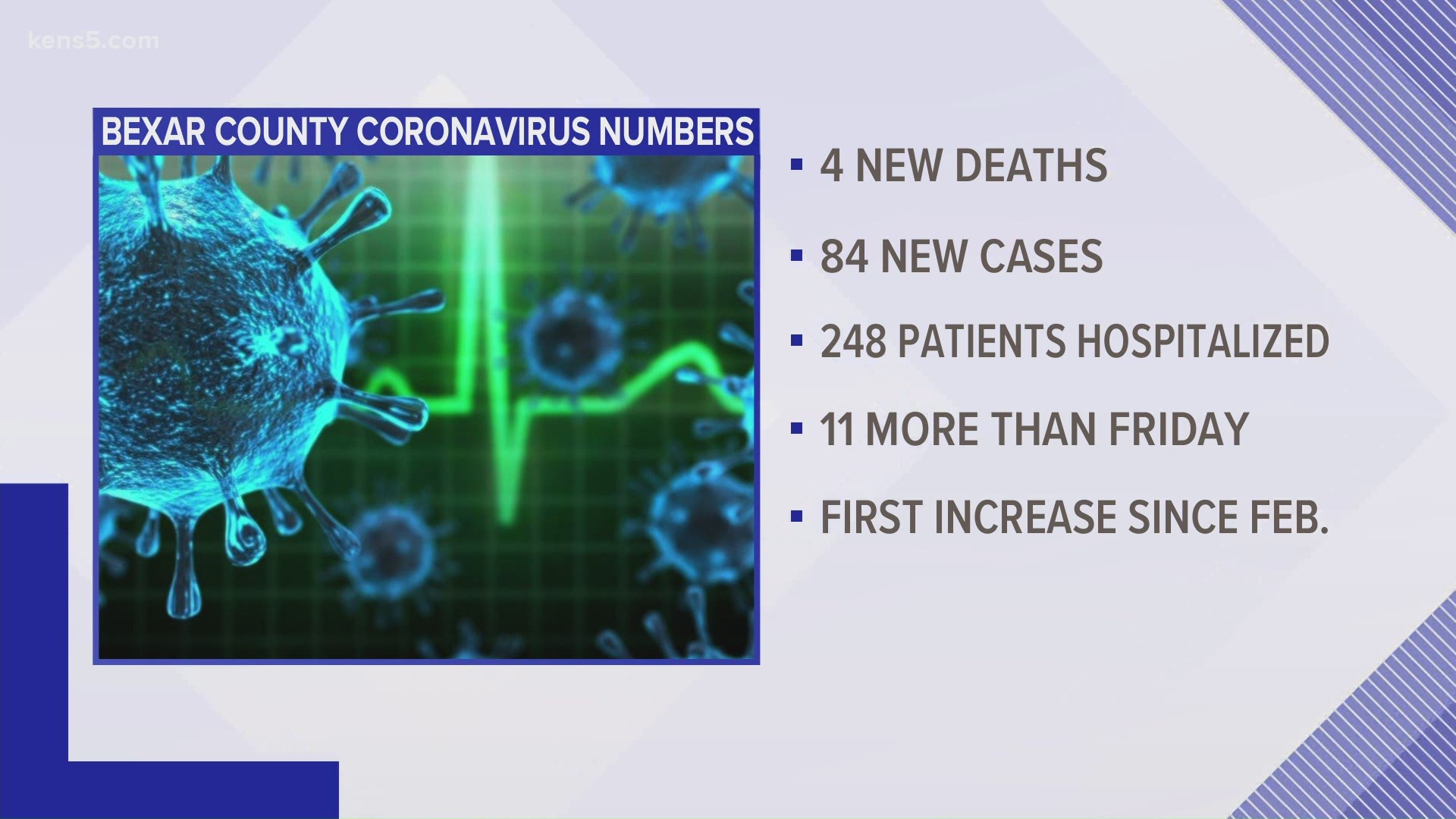SAN ANTONIO — We're tracking the latest numbers from the coronavirus pandemic in San Antonio and across Texas. Here are the latest numbers reported by Bexar and surrounding counties:
- Bexar County: On Saturday, 84 new cases were reported, bringing the total number of cases to 199,673. Four new deaths were also reported, raising the local death toll from virus complications to 2,868.
- Hays County: On Friday, officials reported 17 new cases in the county and one additional COVID-related fatality. There is now a total of 16,668 lab-confirmed local cases, while the death toll increased to 232. Officials estimate 15,990 residents have recovered, while 446 are still ill with the virus.
- Comal County: Officials reported 39 new cases on Friday, along with no additional virus-related deaths. As of Friday, 9,419 total COVID-19 cases have been reported, including 4,955 confirmed and 4,443 probable cases, while 298 county residents have died due to COVID-19 complications.
More county case information is available through the Texas Department of Health Services COVID-19 dashboard.
How Bexar County is trending
We've tracked how many coronavirus cases have been confirmed in Bexar County from the time officials began reporting cases in March 2020. The graphic below shows the number of cases since June and charts those daily case numbers along a 7-day moving average to provide a more accurate picture of the overall coronavirus case curve in our area and the direction we're trending amid the pandemic.
On Saturday, Metro Health updated its online coronavirus-tracking dashboards to reflect 84 new cases in Bexar County—the lowest daily case count since Sunday. The seven-day rolling case average decreased slightly to 167.
Health authorities also reported four more virus-related deaths in the community. In all, 2,868 Bexar County residents have died from virus complications.

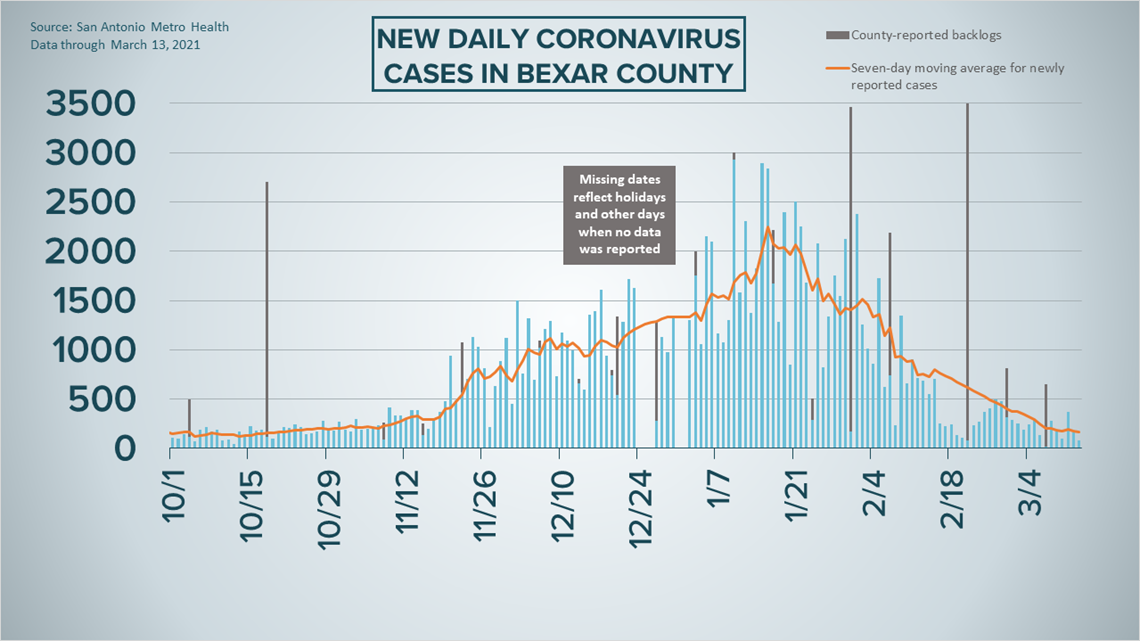
Local hospitalizations saw a slight increase, going up for the first time since Feb. 22 to 248 COVID-19 patients receiving treatment at area facilities. Of those 248, 59 patients are on ventilators and 90 are in intensive care; both those figure are down from Friday.

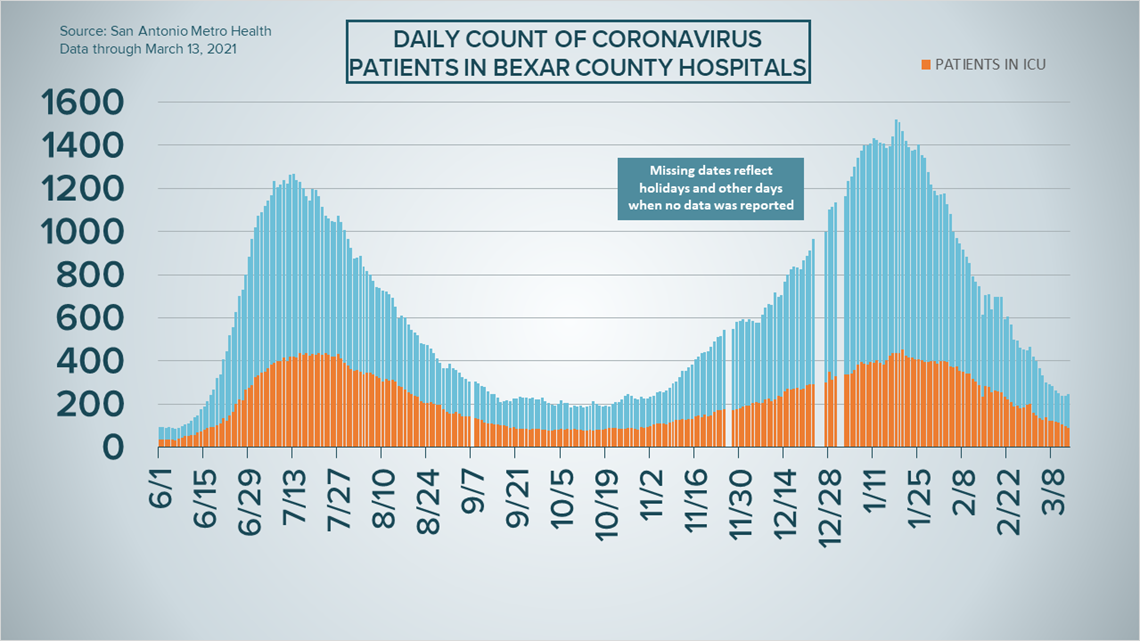
Coronavirus in Texas
The total number of novel coronavirus cases in the state since the pandemic began grew by 4,906 on Saturday, according to the Texas Department of State Health Services. That total includes 3,726 new confirmed cases, 912 new probable cases, and a backlog of 268 cases. More details can be found on this page.
Saturday's figures bring the total number of Texans diagnosed with COVID-19 to more than 2.715 million.

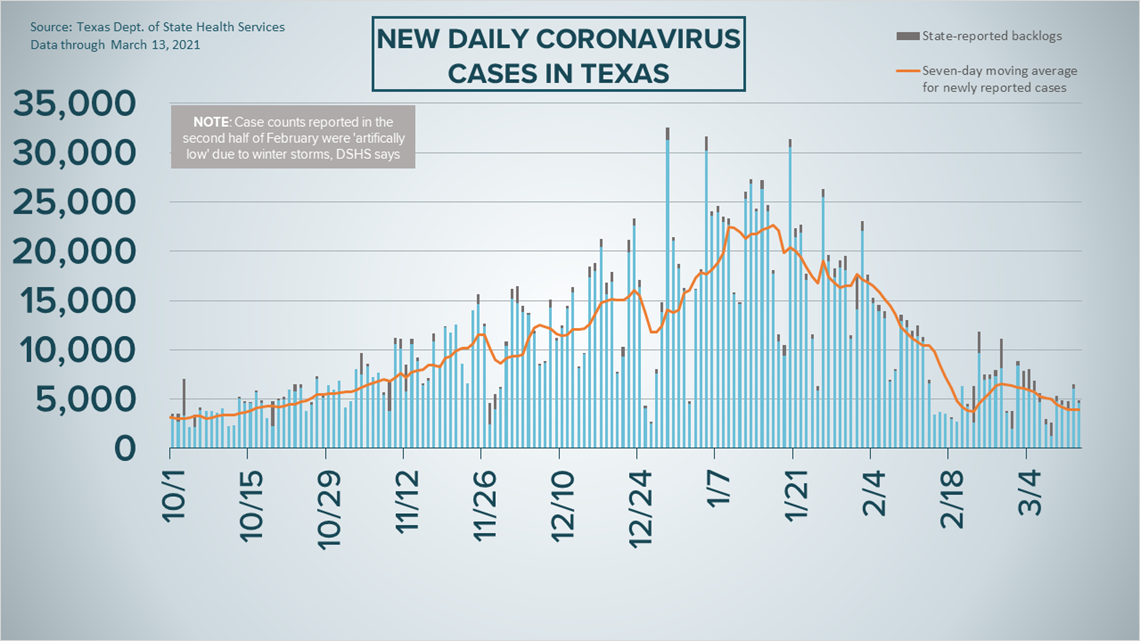
Meanwhile, state health authorities reported an additional 156 deaths from coronavirus complications in Texas, following three consecutive days of at least 200 fatalities. In all, 45,474 Texans have died from COVID-19 complications.
Following a drastic jump in statewide hospitalizations Tuesday, the number has decreased for the fourth day in a row, this time by 10 to 4,219 COVID-19 patients receiving treatment for their symptoms across the state, as of Saturday. The last time the figure was that low was Oct. 18.
The state, meanwhile, estimates that about 2.548 million Texans have recovered, while 118,431 Texans remain ill with COVID-19.
The latest update from the Texas Education Agency showed that there have been at least 193,496 cumulative cases among staff and students on Texas public school campuses through March 7. That number comprises 126,154 positive student cases and 67,342 staff cases. More information can be found here.

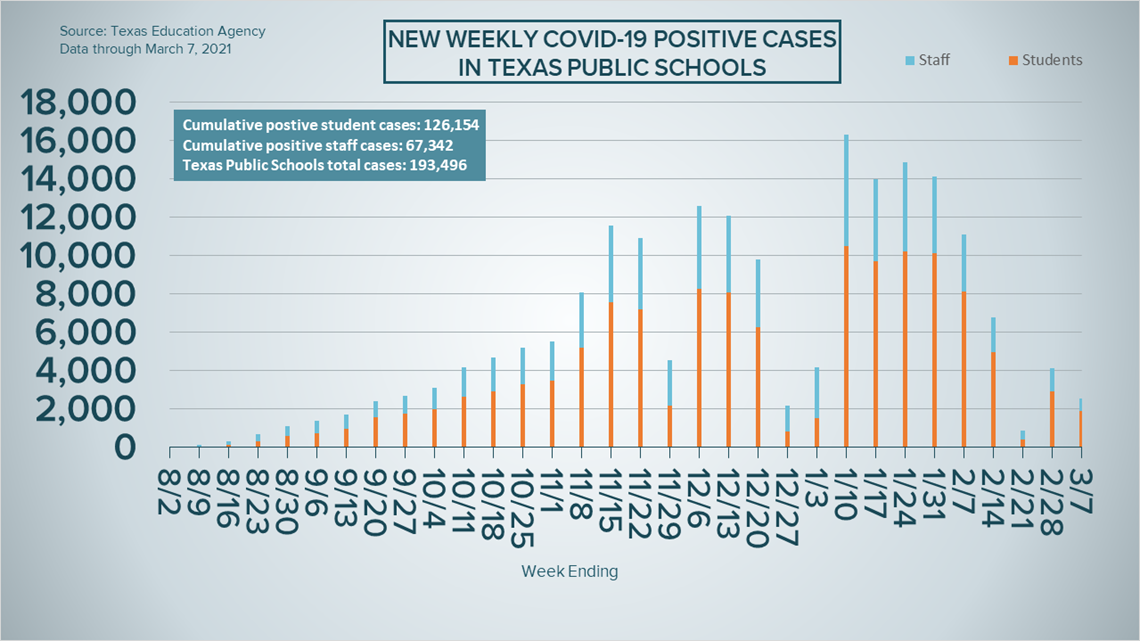
The TEA typically releases new data on school cases on Fridays.
Latest Coronavirus Headlines
- 'This pandemic will be soon behind us': Mayor Nirenberg reflects on 365 days of unprecedented challenges
- How did we get here? A look back at a year of COVID-19 in San Antonio
- VERIFY: Fact-checking President Biden's speech on COVID-19 and vaccinations
- US hits COVID-19 vaccine milestone of 100 million shots
- VERIFY: COVID-19 vaccines for zoo animals have no impact on human shot distribution
- Where to find a coronavirus vaccine appointment as rollout ramps up across Texas
- President Biden signs $1.9T coronavirus relief bill before speech to nation
- $1,400 stimulus checks: Who qualifies, how to track, when money may arrive
- Lifting mask mandate doesn't change much in some rural Texas counties
Coronavirus symptoms
The symptoms of coronavirus can be similar to the flu or a bad cold. Symptoms include fever or chills, cough, shortness of breath or difficulty breathing, fatigue, muscle or body aches, headache, new loss of taste or smell sore throat, congestion or runny nose, nausea or vomiting, and diarrhea, according to the Centers for Disease Control.
Most healthy people will have mild symptoms. A study of more than 72,000 patients by the Centers for Disease Control in China showed 80 percent of the cases there were mild.
But infections can cause pneumonia, severe acute respiratory syndrome, kidney failure, and even death, according to the World Health Organization. Older people with underlying health conditions are most at risk.
Experts determined there was consistent evidence these conditions increase a person's risk, regardless of age:
- Chronic kidney disease
- COPD (chronic obstructive pulmonary disease)
- Obesity (BMI of 30 or higher)
- Immunocompromised state (weakened immune system) from solid organ transplant
- Serious heart conditions, such as heart failure, coronary artery disease, or cardiomyopathies
- Sickle cell disease
- Type 2 diabetes
- The CDC believes symptoms may appear anywhere from two to 14 days after being exposed.
Human coronaviruses are usually spread...
- Between people who are in close contact with one another (within about 6 feet).
- Through respiratory droplets produced when an infected person coughs, sneezes or talks. These droplets can land in the mouths or noses of people who are nearby or possibly be inhaled into the lungs.
- Some recent studies have suggested that COVID-19 may be spread by people who are not showing symptoms.
Help stop the spread of coronavirus
- Stay home when you are sick.
- Eat and sleep separately from your family members
- Use different utensils and dishes
- Cover your cough or sneeze with your arm, not your hand.
- If you use a tissue, throw it in the trash.
Find a Testing Location
City officials recommend getting a COVID-19 test if you experience fever or chills, cough, shortness of breath or difficulty breathing, fatigue, muscle or body aches, headache, new loss of taste or smell, sore throat, congestion or runny nose, nausea or vomiting, or diarrhea.
Here's a Testing Sites Locator to help you find the testing location closest to you in San Antonio.

